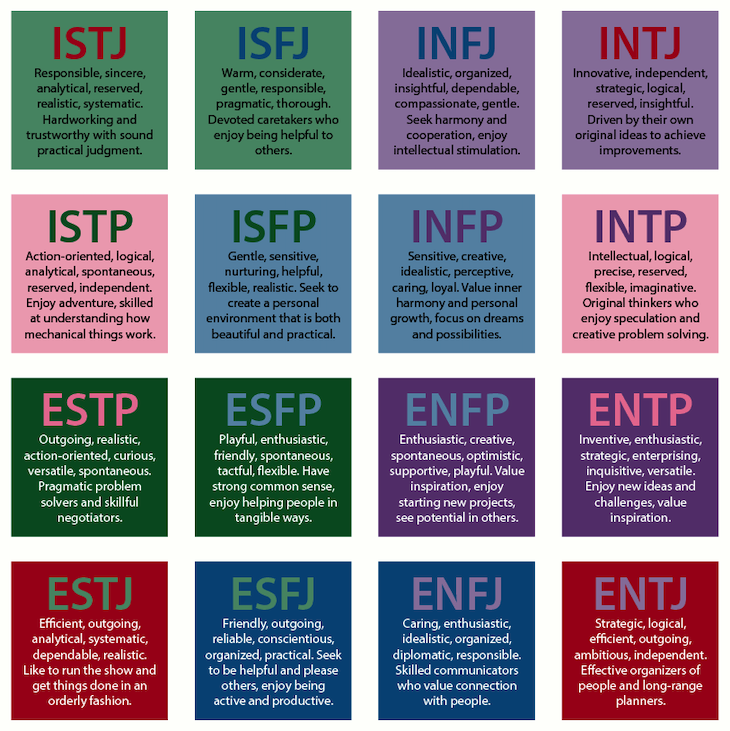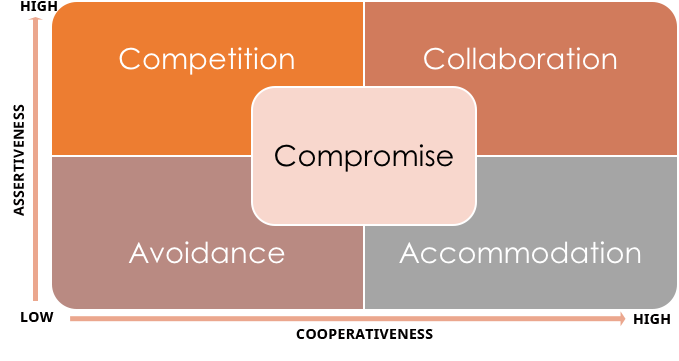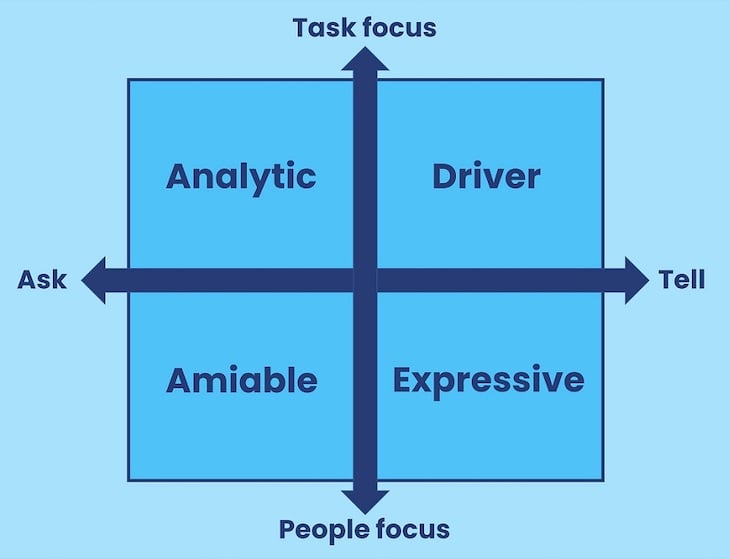How often do you reach the end of the day and wonder what you spent all your time doing?
As a product manager, you are likely spending a large portion of your day in and out of meetings, responding to messages, and writing emails. This is because a significant part of your job involves communication.
Table of contents
The components of clear communication
Effective communication is critical to the success of any team, product, or business. If you break down what communication is, several different components work together to create a complete and effective message.
These components include:
- Sender — The person who initiates the message intending to convey specific meaning or information to the receiver
- Message — The information, idea, or message that the sender intends to communicate to the receiver
- Encoding — The process of translating the message into a form that can be transmitted, such as words, symbols, gestures, or signs
- Channel — The medium through which the message is transmitted, such as oral, written, or non-verbal communication
- Receiver — The person who receives the message, decodes it, and interprets the meaning of the message based on their own perceptions, experiences, and knowledge
- Decoding — The process of interpreting the message and understanding the meaning of the message by the receiver
- Feedback — The response or reaction of the receiver to the message, which provides information to the sender on whether the message was understood and how it was perceived
- Noise — Any interference or barrier that can disrupt the communication process, such as distractions, physical distance, language barriers, or technical issues
Effective communication requires each of these components to work together smoothly. So, you can see how easy it can be to miscommunicate!
Understanding communication styles and using communication frameworks can help you identify what your default position might be and how you might better adapt your communication style to your team dynamics.
6 types of communication styles
Communication styles are the ways in which people express themselves, interact with others, and respond to different situations. These styles can have a significant impact on team dynamics and productivity, especially in cross-functional teams.
Let’s zoom in on the following six communication styles:
- Assertive communication
- Aggressive communication
- Passive communication
- Passive-aggressive communication
- Collaborative communication
- Nonverbal communication
1. Assertive communication
This style involves expressing your thoughts, feelings, and opinions in a clear, direct, and respectful manner without violating the rights of others.
Assertive communication is considered one of the healthiest communication styles because it respects both the speaker’s and the listener’s rights. The assertive style is about being confident without being overly aggressive.
2. Aggressive communication
This style involves expressing your thoughts, feelings, and opinions in a way that disregards the rights of others and can be intimidating, threatening, or humiliating.
Aggressive communicators tend to dominate conversations, disregarding others’ feelings or rights. This style may lead to short-term results but can harm relationships and team dynamics in the long run.
3. Passive communication
This style involves avoiding expressing your thoughts, feelings, and opinions, and often results in giving in to others’ demands and ignoring your own needs.
Passive communicators may struggle to voice their needs and often feel ignored or overlooked in discussions. Over time, this can lead to feelings of resentment and frustration.
4. Passive-aggressive communication
This style involves expressing your thoughts, feelings, and opinions indirectly, often through sarcasm, manipulation, or sabotage.
Passive-aggressive communicators may seem agreeable on the surface but may express their anger or dissatisfaction through subtle, indirect behaviors. This style can create confusion and mistrust within teams.
5. Collaborative communication
This style involves working together with others to find mutually beneficial solutions and build positive relationships.
Collaborative communicators seek input from others and strive for a win-win solution that respects everyone’s needs. This style can help foster a sense of teamwork and cooperation within groups.
6. Nonverbal communication
This style involves using body language, facial expressions, and tone of voice to convey meaning and emotion.
Nonverbal communicators convey messages through their physical behavior and voice tonality, which can often communicate just as much, if not more, than words. Nonverbal cues can greatly influence the way a message is perceived and understood.
Subscribe to our product management newsletter
Get articles like this to your inbox
4 communication frameworks
It’s essential to recognize and understand your own communication style and learn to adapt it to different situations and people to communicate effectively and build positive relationships.
There are several communication style frameworks designed to help people better understand individuals’ communication preferences. The most commonly used frameworks are:
- DISC (dominance, influence, steadiness, and conscientiousness)
- Myers-Briggs Type Indicator (MBTI)
- Thomas-Kilmann Conflict Mode Instrument (TKI)
- Social Styles model
Both frameworks are designed to help individuals and teams gain insight into their communication style and learn how to adapt and work effectively with others who have different styles.
While communication styles are broad categories that describe general patterns of behavior, communication style frameworks provide more detailed insights into individual preferences and tendencies.
For example, the assertive communication style is a broad category that describes individuals who are confident and direct in expressing their needs and opinions. The DISC framework, on the other hand, provides a more nuanced understanding of assertive communication by measuring an individual’s behavioral preferences.
1. DISC (dominance, influence, steadiness, and conscientiousness)
The DISC framework measures an individual’s behavioral preferences based on four primary dimensions:
- Dominance — People who are assertive, results-oriented, decisive, and often competitive. They prefer environments where they have control and authority
- Influence — People with high influence are outgoing, enthusiastic, and thrive on social interactions. They are often persuasive and can inspire others with their optimism
- Steadiness — Individuals with a high steadiness factor are dependable, cooperative, and value stability and consistency. They are patient and good listeners, often serving as calming influences in a team
- Conscientiousness — Conscientious individuals are analytical, detail-oriented, and adhere closely to rules and procedures. They are meticulous in their work and highly value accuracy
Each dimension represents a different communication style. Dominant people are typically assertive and decisive, while influential people tend to be outgoing and enthusiastic. Steady people are usually patient and cooperative, while conscientious people are detail-oriented and analytical.
2. Myers-Briggs Type Indicator (MBTI)
The MBTI framework, on the other hand, uses a combination of four dichotomies to categorize individuals into one of 16 personality types. Each personality type is associated with a different communication style.

Here are the 16 personality types and what they mean:
- INTJ (Introverted, Intuitive, Thinking, Judging: — Independent, original, analytical, and determined
- INTP (Introverted, Intuitive, Thinking, Perceiving) — Logical, original, creative thinkers who prefer flexibility
- ENTJ (Extraverted, Intuitive, Thinking, Judging) — Assertive, outspoken leaders who enjoy complex challenges
- ENTP (Extraverted, Intuitive, Thinking, Perceiving) — Resourceful problem-solvers, adept at generating possibilities
- INFJ (Introverted, Intuitive, Feeling, Judging) — Seek harmony and understanding, inspired by future possibilities
- INFP (Introverted, Intuitive, Feeling, Perceiving) — Idealistic, loyal to their values, interested in helping others
- ENFJ (Extraverted, Intuitive, Feeling, Judging) — Empathetic, responsive, and responsible, highly attuned to the feelings of others
- ENFP (Extraverted, Intuitive, Feeling, Perceiving) — Warmly enthusiastic, imaginative, and seeing life as full of possibilities
- ISTJ (Introverted, Sensing, Thinking, Judging) — Practical, matter-of-fact, with a focus on immediate needs
- ISFJ (Introverted, Sensing, Feeling, Judging) — Quiet, friendly, responsible, and conscientious
- ESTJ (Extraverted, Sensing, Thinking, Judging) — Practical, realistic, matter-of-fact, with a natural head for business or mechanics
- ESFJ (Extraverted, Sensing, Feeling, Judging) —Warm-hearted, talkative, popular, conscientious, born cooperators
- ISTP (Introverted, Sensing, Thinking, Perceiving) — Tolerant, flexible, quick problem-solvers, interested in the way things work
- ISFP (Introverted, Sensing, Feeling, Perceiving) — Quiet, friendly, sensitive, and kind, enjoy the present moment
- ESTP (Extraverted, Sensing, Thinking, Perceiving) — Flexible, tolerant, pragmatic problem-solvers, focused on immediate results
- ESFP (Extraverted, Sensing, Feeling, Perceiving) — Outgoing, friendly, accepting, enjoy working with others to make things happen
For example, an introverted thinker (INTP) is likely to communicate in a logical and analytical way, while an extroverted feeler (ENFJ) is likely to communicate in an empathetic and people-focused way.
3. Thomas-Kilmann Conflict Mode Instrument (TKI)
The TKI framework categorizes individuals based on their behavior in conflict situations. It identifies five primary conflict-handling modes:

Competing
Individuals with a competing style are assertive and uncooperative. They see conflict as a win-lose situation and often assert their own goals and interests at the expense of others. This style can be beneficial when quick decisions are needed, but may lead to strained relationships if overused
Accommodating
The accommodating style is characterized by being cooperative and unassertive. Individuals with this style are often willing to neglect their own interests to satisfy the concerns of others. This style can promote harmony and prevent conflicts from escalating, but it can also result in their own needs and concerns being overlooked.
Avoiding
Avoiding style is both unassertive and uncooperative. Those with this style tend to sidestep or postpone conflict, often withdrawing from threatening situations. While this style can provide temporary relief from conflict, it might also lead to unresolved issues.
Collaborating
The collaborating style is both assertive and cooperative. Individuals with this style attempt to satisfy both their own concerns and the concerns of others, often seeking win-win situations. This approach can lead to creative solutions and increased satisfaction among team members, but it may also be time-consuming.
Compromising
Compromising style is moderately assertive and cooperative. Those who adopt this style often seek a fair balance between their interests and the interests of others. It can be a useful approach when both parties have equal power and mutually exclusive goals, but it may also result in suboptimal solutions where both sides lose something.
Each mode represents a unique way in which individuals might communicate during conflict. Understanding these styles can help to manage and resolve conflicts more effectively in team settings.
4. Social Styles model
The Social Styles model is a practical framework that offers helpful insights into communication preferences. It defines four social styles: analytic, driver, expressive, and amiable. These styles are based on two axes: task-focused vs. people-focused and asks vs. tells.

Here are the four social styles and what they mean:
- Analytic individuals are typically task-oriented and ask-oriented, with a preference for data-driven decision making
- Driver individuals are also task-oriented but tend to be tell-oriented, often making quick decisions and showing a preference for control
- Expressive individuals are people-oriented and tell-oriented, often enthusiastic and prone to making impulsive decisions based on gut feelings
- Amiable individuals are people-oriented and ask-oriented, preferring consensus decision-making and prioritizing relationships
Understanding and adapting to these social styles can help you enhance relationships, achieve competitive advantage, and leverage the strengths of other styles.
Applying communication frameworks in your organization
To use the frameworks described above, you first need to start with yourself. For example, you could use this free quiz from 16Personalities, which follows the MBTI framework to help you evaluate your personality type. If you go through this exercise as a team, you can then share your results and start to understand where your team members may be coming from when communicating with you.
Regardless of the framework used, it’s important to understand that communication styles are not fixed and can (and should) vary depending on the situation and individual preferences. For example, an assertive communication style may be appropriate in a high-stakes negotiation, while a passive communication style may be more appropriate in a situation where relationship-building is a priority.
It’s also important to recognize that different communication styles can cause conflict and misunderstanding in teams. For example, an aggressive communication style can be intimidating and disruptive, while a passive communication style can lead to frustration and lack of engagement, depending on the context.
The key to effective collaboration is adaptability and empathy. This means being able to recognize and respond to different communication styles in a way that promotes understanding and collaboration.
How can product managers be better communicators?
As a product manager, effective communication with cross-functional teams and stakeholders is essential to the success of your product. Because you’re the one who sets the product vision, strategy and roadmap, and because you understand customer problems more intimately than anyone else, it falls on your to determine the best way to convey this information to various departments throughout your organization. That’s a lot to communicate and to a lot of people!
Here are some basic tips to help you communicate more effectively in your day-to-day interactions with both your own team and stakeholders across your business:
- Understand your own communication style and learn how to adapt it to different situations and people
- Listen actively and practice empathy to understand others’ perspectives
- Be clear and concise in your communication and avoid jargon or technical language that others may not understand
- Encourage open communication and feedback from team members. Seek to be curious about what works and what does not work
- Use different communication channels (e.g., email, video calls, in-person meetings) to accommodate different preferences
Recognize the value of good communication
Communication is a significant part of being an effective product manager. Understanding different communication styles is essential for effective collaboration and team dynamics.
Using communication frameworks can help identify what your default positioning might be and how you may need to adapt to others. Product managers who are aware of their own communication style and adapt it to different situations and people can build better relationships and achieve more successful outcomes.
Featured image source: IconScout
LogRocket generates product insights that lead to meaningful action
LogRocket identifies friction points in the user experience so you can make informed decisions about product and design changes that must happen to hit your goals.
With LogRocket, you can understand the scope of the issues affecting your product and prioritize the changes that need to be made. LogRocket simplifies workflows by allowing Engineering and Design teams to work from the same data as you, eliminating any confusion about what needs to be done.
Get your teams on the same page — try LogRocket today.
Source link






Leave a Reply